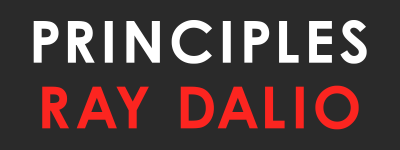People who are satisfied in their professional roles are more productive, innovative, and loyal.
When teams aren’t productive, companies often start looking for new tech, or new tools to streamline processes, reduce redundancies, and more. That’s what technology is for, right? Solving problems? The impulse to buy another tool is understandable, but it is important to look at the big picture before making another well-intentioned purchase.
First, notice how the staff interacts around the coffee machine. Are conversations laced with negative comments about work, management, or workload? When everyone is working, are they engaging in conversation, or is it just heads down, plugging away? What about working design sessions? Does it feel more like group therapy, with people mainly airing work-related grievances? These are all signs of a dysfunctional work environment plagued with low morale. No amount of technology can help improve productivity in this kind of atmosphere.
Rocio Pelayo, founder and managing principal of Texas-based Cielo Global Consulting, knows that tech companies overlook a critical element when attempting to improve productivity. Pelayo has designed technology enterprise solutions for the past 20 years. Over the course of her career, she has noticed a common denominator among organizations seeking to increase efficiency and output: they fail to examine their corporate culture for signs of low employee morale. This is a mistake. Anecdotal and research findings show a direct link between office morale and productivity; if workers are frustrated or bored, productivity falters.
Pelayo advises companies to conduct a comprehensive assessment of their problem areas and commit to fixing them. She knows the significant impact that dysfunctional workplaces have on productivity, and how they affect employee morale and retention. According to Pelayo, a negative business culture is established when management does not recognize or attempt to solve lingering communication issues and inefficiency.
To improve morale and increase productivity, Pelayo counsels management teams to do the following:
Pay Attention to What You See and Hear
“Make a point to be present and observant in the workplace,” Pelayo says. “Employees aren’t likely to tell management, in so many words, that they’re frustrated – so learn to pay attention to body language, and how employees interact with one another, or don’t interact at all. Listen for tension in their tone of voice, between each other and with clients. Read between the lines in email chains for passive aggression or frustration.” The goal, according to Pelayo, is to identify potential problem areas that can be addressed. If the staff in one department embodies calm, positive, relaxed attitudes, and the atmosphere in another is one of a glum, tension-filled stress shop, commit to finding out why that disparity exists.
Treat Inefficiency as the Enemy
“Inefficient business processes don’t just hurt the bottom line, they damage morale among employees who may quietly seethe at spending time on tedious, menial tasks that seem to have no greater purpose beyond ‘that’s the way we’ve always done it,’” Pelayo says. She cites an article from the Harvard School of Public Health’s website (“How to Transform Employee Resistance through Team Building and Training,” by Jacqueline DiChiara) that states, “When an organization is run by inefficient management who regularly causes day-to-day, or even hour-by-hour, workplace challenges that drain employees and waste resources, lack of communication is often a key culprit.” The article describes a case study at a hospital in which workers felt isolated and often frustrated at the duplication of services and ineffective management.
Interview Your Employees
In the case study that DiCharia refers to in her Harvard School of Public Health article, an outside expert interviewed employees using two questionnaires: the Strength Deployment Inventory (SDI) and the Thomas-Kilmann Conflict Mode Instrument (TKI assessment). The SDI addresses leadership techniques and the TKI assessment addresses five conflict management styles, described as collaborating, competing, avoiding, accommodating, and compromising. “The answers to these questionnaires helped identify possible problem areas that could be directly observed in the workplace, in some cases by shadowing employees to find inefficiencies or workflow imbalances,” Pelayo says.
Air Grievances, Practice Listening, and Foster Solutions
A dysfunctional corporate culture can’t be fixed in a behind-the-scenes manner. Finding solutions to problems rooted in communication (or lack thereof) don’t work that way. “Conflicts are often the result of employees feeling isolated in their struggles within process inefficiencies, feeling unheard, and cultural pressures,” Pelayo says. “Bringing teams together in workshops can help ease tensions by bringing issues out into the open.” Pelayo noted the importance of establishing workshop ground rules. For example, employees must be respectful to one another, and they should be given the opportunity to air grievances in a setting where they feel their issues are being heard and acknowledged. In most cases, Pelayo says, this means that a trained, outside expert should be brought in to facilitate.
In DiChiara’s case study, an expert conducted workshops in which 20 employees participated. The participants shared the dysfunction they were experiencing, which included, “absence of trust, fear of conflict, lack of commitment, avoidance of accountability, and/or inattention to results.” This gave managers critical insight into the pain points their employees were experiencing. In many cases, the participants felt empathy for their colleagues once they better understood that their concerns and fears were not unlike their own.
Pelayo says that in dysfunctional workplace environments, “the worst thing executive teams and management can do is ignore the problem in hopes that it will just go away.” By following the steps outlined here, leaders can pinpoint the issues that are negatively impacting employee morale. Once isolated, these issues can be addressed and solved.
Bottom line? When employees feel validated and heard, corporate culture becomes less problematic, morale improves, and business thrives.
Image: Pixabay











Thanks!
Our editors are notified.